Greenovia Galore: 5 Striking Succulents and How to Care for Them
Envision a captivating succulent that resembles a vibrant green rose, adorned with velvety, rounded leaves nestled against each other like delicate petals. Welcome to the enchanting realm of Greenovia succulents! These diminutive yet striking plants originate from the Canary Islands, boasting a maximum height of about 6 inches when fully mature. Despite their compact size, Greenovia succulents pack a punch of allure that will leave you spellbound.
Indulge in the grayish-green hues of their squatted bodies, embellished with oval or paddle-shaped leaves that exude a smooth and fleshy texture. As these captivating succulents age, their older petals transform into a captivating pink shade, gradually unfurling from the plant’s body, creating a mesmerizing display of nature’s artistry.
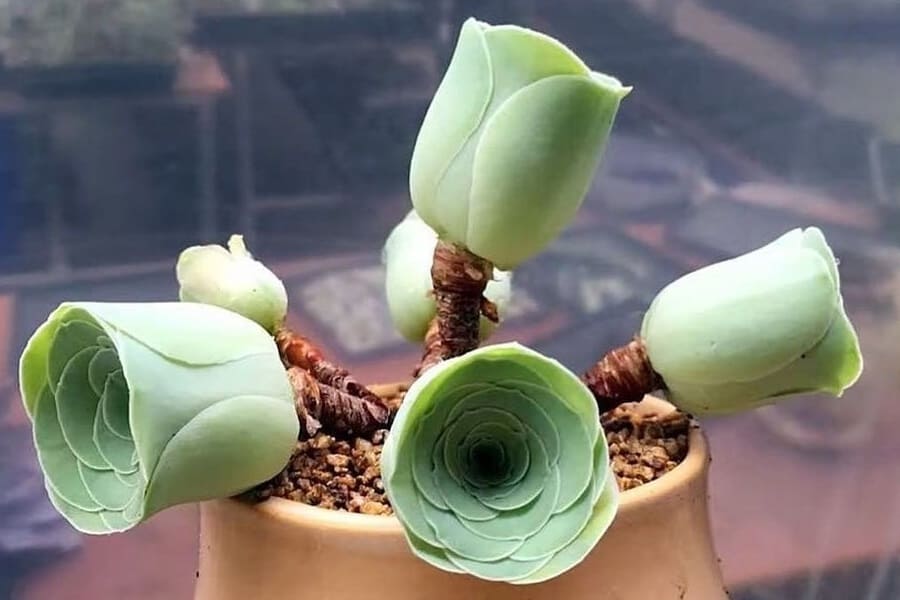
Contents
Types of Greenovia Succulents
Greenovia aizoon (Aeonium aizoon)
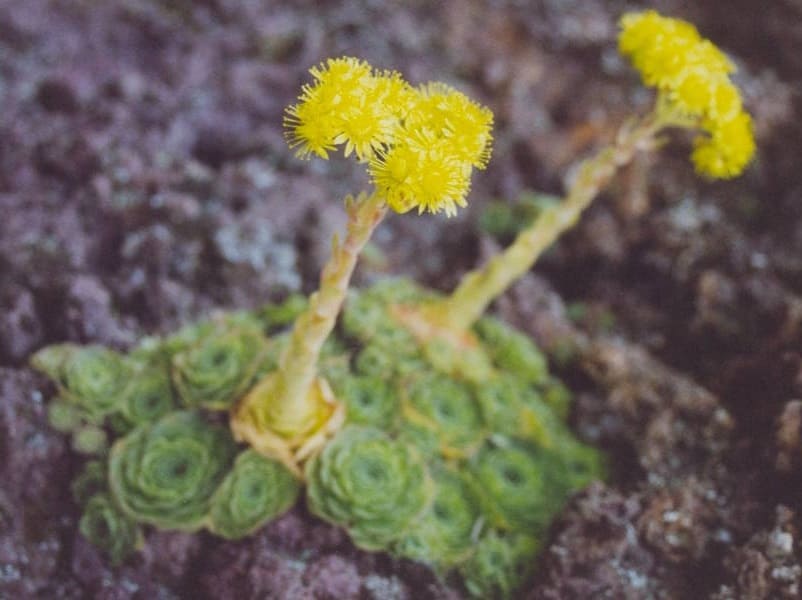
A perennial succulent forming clusters of tiny, dark green rosettes with persistent dead leaves on its much-branched, reduced stems. Its flowering stem reaches up to 6 inches, crowned with a flat head of petite yellow blooms.
Greenovia aurea (Aeonium aureum)
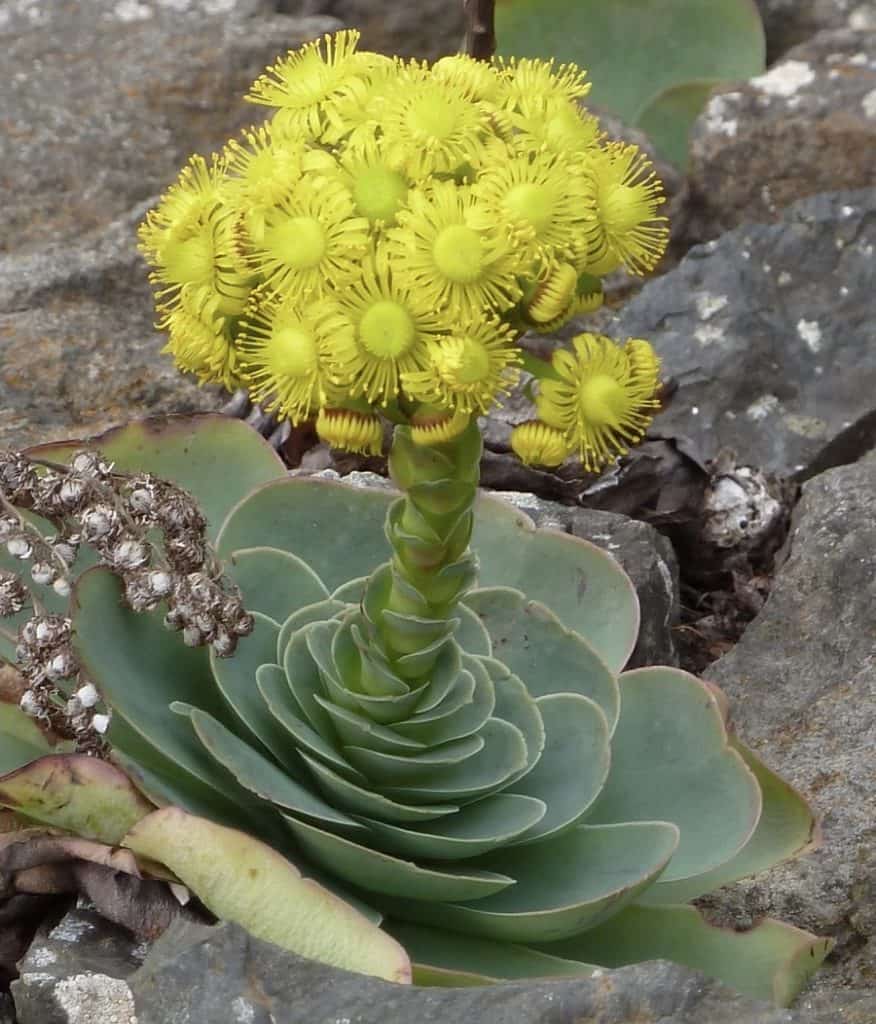
A monocarpic perennial succulent forming a dwarf, prostrate clump reaching 12 to 18 inches in height. Its cup-shaped rosettes showcase rounded, spathulate leaves with a bluish-green waxy coating, and deep yellow flowers bloom in spring.
Greenovia diplocycla (Aeonium diplocyclum)
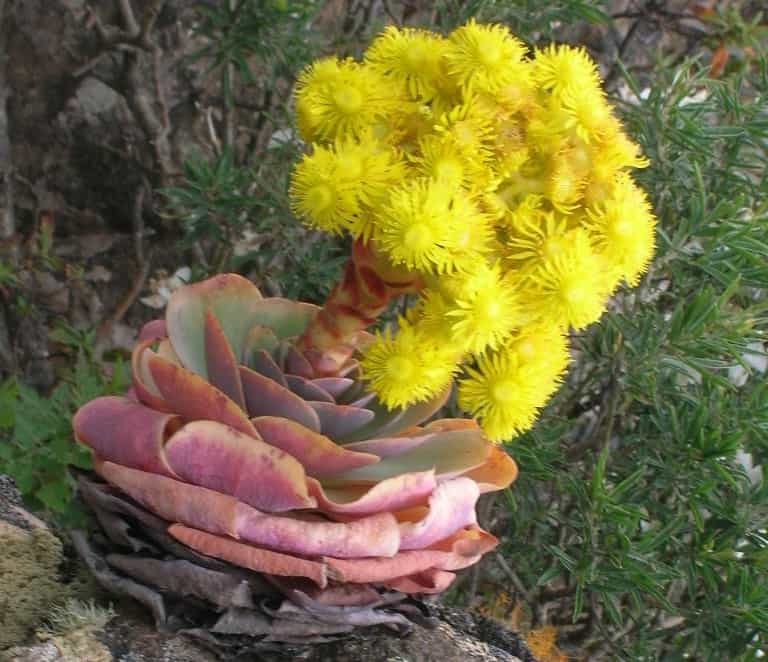
Greenovia dodrantalis (Aeonium dodrantale)
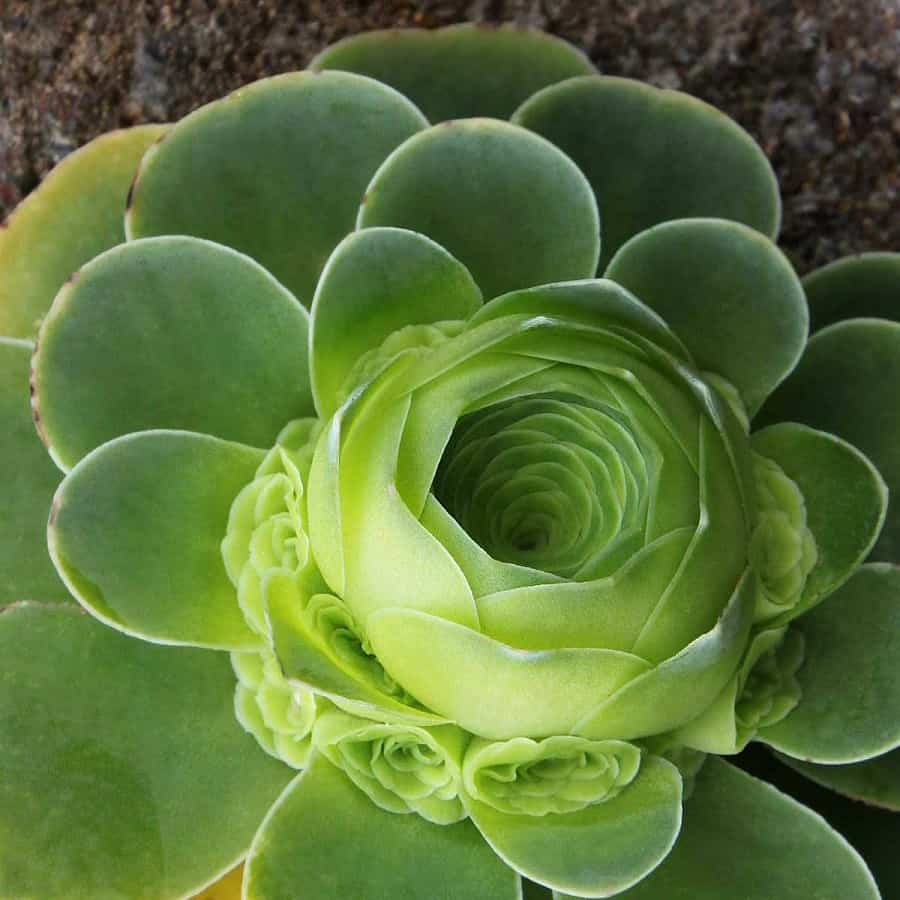
Greenovia sedifolia (Aeonium sedifolium)
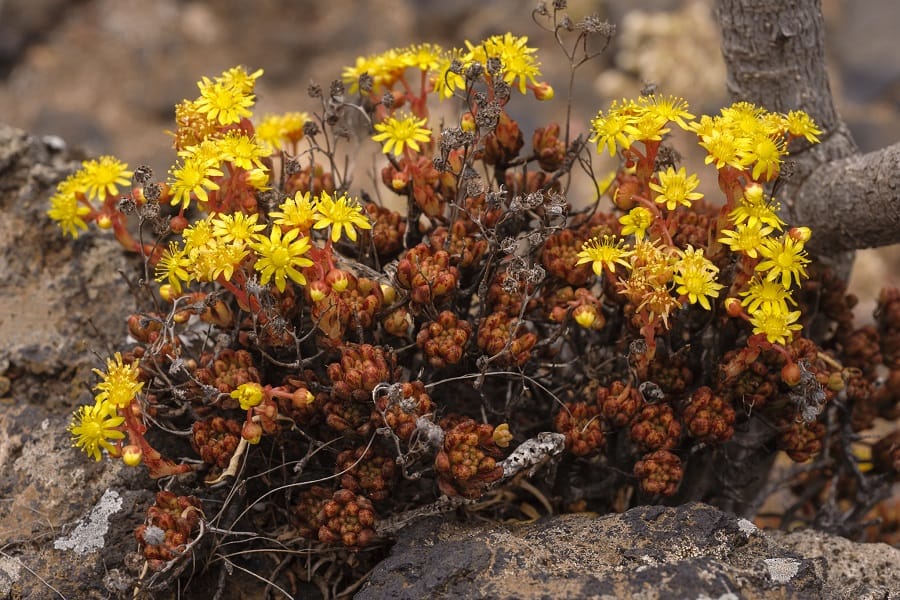
The smallest-leaved Greenovia commonly cultivated, with a densely branched, shrubby form reaching up to 16 inches tall.
Caring for Your Greenovia Succulents
Light
These sun-loving plants thrive in brightly lit, warm spaces. Gradually introduce them to outdoor patios during summer, ensuring they receive ample light while avoiding scorching direct sunlight. If you cannot provide sufficient natural light indoors, consider using grow lights to meet the high light requirements of Greenovia succulents. Position the grow lights close to the plants, following the manufacturer’s instructions for optimal light intensity and duration.
Water
Like most succulents, water Greenovia only when the topsoil feels dry. Reduce watering to half during winter and resume the summer routine as new growth emerges in spring.
Soil
Greenovia flourishes in well-draining pots with gritty, fertile potting soil. Repot every few years to accommodate their bulky growth.
Fertilizer
During the active growing season, feed your Greenovia with a half-strength balanced fertilizer monthly. Avoid fertilizing during summer dormancy.
Temperature and Humidity
These plants prefer low humidity, mild summers, and minimal rainfall. Provide sunny mornings and afternoon shade, protecting them from extreme frost.
Pests and Diseases
Keeping your Greenovia succulents healthy requires being on the lookout for common pests and diseases. Inspect plants regularly for critters like mealybugs (white cottony masses), scale insects (hard brown bumps), and spider mites (leaves with fine webbing and stippled patterns).
If you spot any, isolate the affected plant and remove the pests with a soft brush or alcohol-dipped cotton swab. Then, treat the plant with an insecticidal soap or neem oil solution, repeating every 7-10 days until the pests are gone.
Also, watch for fungal problems like powdery mildew or root rot, which can be caused by too much moisture. If you see these, improve drainage, cut back on watering, and remove any damaged parts of the plant. Regular check-ups and quick action against bugs and diseases will help keep your Greenovia succulents looking their best.
Greenovia Propagation
Given the rarity of these captivating succulents, propagating Greenovia plants is a valuable skill for any enthusiast. By following a few simple steps, you can expand your collection and share the joy of these rosette beauties with fellow plant lovers.
Seed Propagation
- Collect seeds from the flowers of your Greenovia plant.
- Fill a shallow tray with a well-draining seed-starting mix.
- Sow the seeds on the surface of the soil, spacing them evenly.
- Lightly cover the seeds with a thin layer of the seed-starting mix.
- Mist the tray gently with a spray bottle to avoid disturbing the seeds.
- Keep the soil moist but not waterlogged until the seeds germinate.
- Once seedlings develop multiple leaf sets, transplant them into larger containers with well-draining potting soil.
Offset Propagation
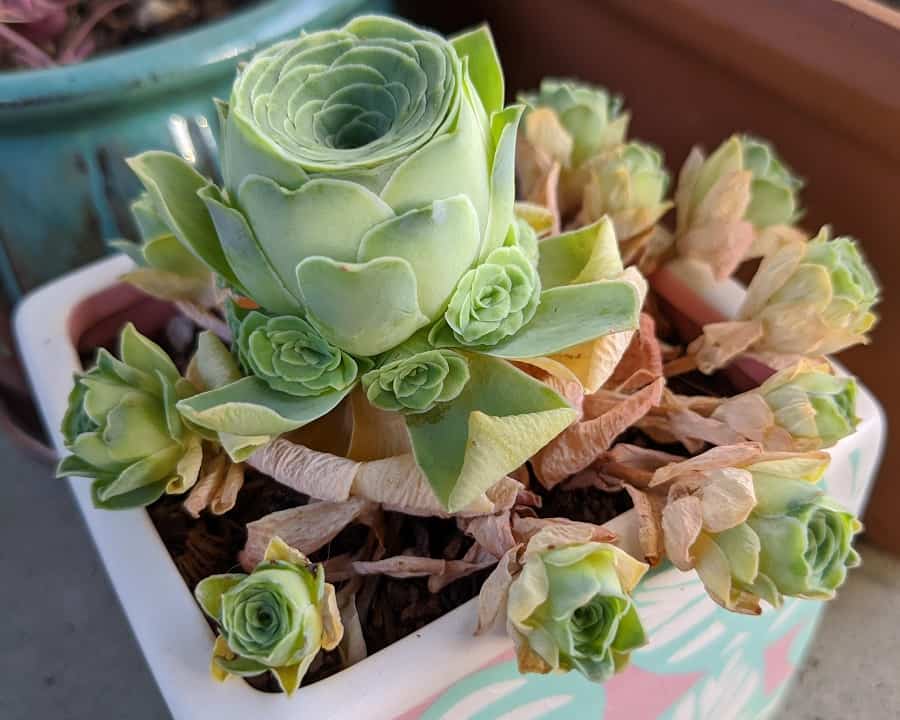
- Identify the offsets (tiny rosettes) growing at the base of the parent Greenovia plant.
- Carefully separate the offsets from the main plant using a clean, sharp knife or pair of scissors.
- Allow the offsets to callus over for a few days before planting.
- Prepare a shallow tray or pot with well-draining soil suitable for succulents.
- Plant the offsets in the soil, gently firming them in place.
- Water sparingly, allowing the soil to dry out between waterings.
- Care for the new Greenovia plants as you would for an established adult plant, providing bright light, appropriate watering, and well-draining soil.
FAQs
How do you collect Greenovia seeds?
When your Greenovia plant starts to bloom, you’ll notice the formation of tiny flower heads. To collect the seeds, simply place a small paper bag over the flower heads and secure it with a rubber band or string. As the flowers mature and dry out, the seeds will drop into the bag, making it easy for you to gather them for sowing later.
Can Greenovia succulents be grown indoors?
Absolutely! These charming rosette succulents make excellent indoor plants, adding a touch of natural beauty to your living spaces. Just make sure to provide them with bright, indirect sunlight, well-draining soil, and proper watering (allowing the soil to dry out between waterings). With the right care, Greenovia succulents will thrive and captivate you with their unique colors and textures.
How often should I repot my Greenovia succulent?
Greenovia plants have a tendency to become quite plump and bulky as they mature. To accommodate their growth, it’s recommended to repot them every 2-3 years into a slightly larger container with fresh, well-draining potting mix. This will prevent the plant from becoming root-bound and ensure it has enough room to continue flourishing.
Do Greenovia succulents need special fertilizer?
Like most succulents, Greenovia plants are relatively low-maintenance when it comes to fertilizing. During their active growing season (typically spring and early summer), you can give them a gentle boost with a balanced, water-soluble fertilizer diluted to half-strength. Avoid fertilizing during their dormant period, as this can lead to unnecessary growth and potential issues.
